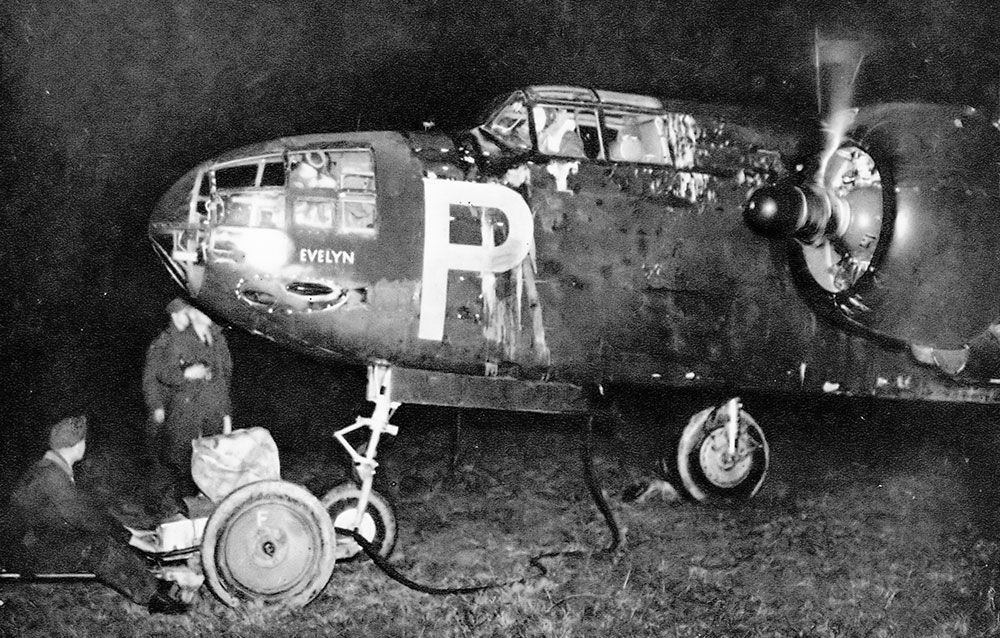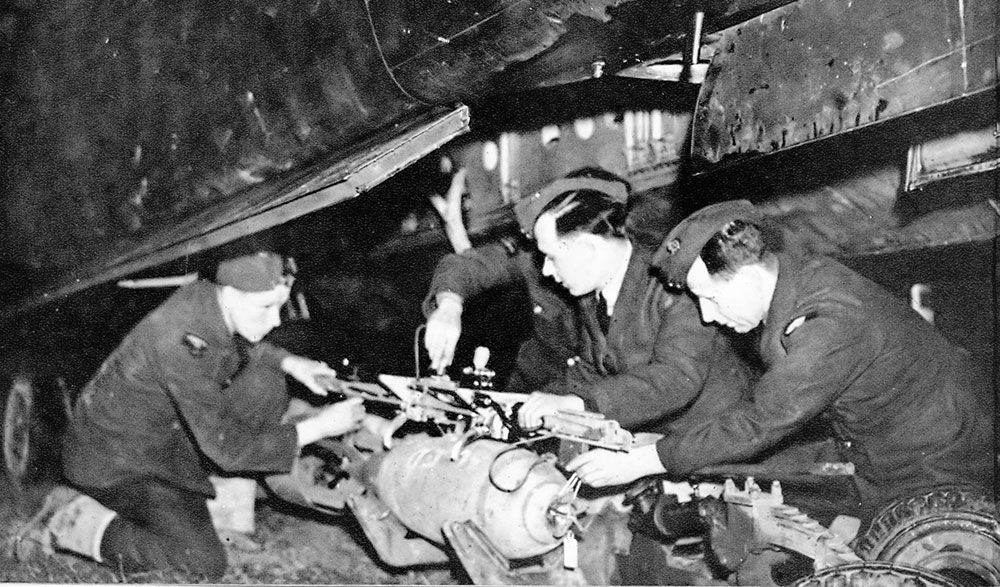Part 86.
12. Havoc Stalks Hun
Fighter command pilots in American-built Havoc aircraft paid visits to German-occupied aerodromes in northern France during the night. (Air Ministry Bulletin.)
First of all, I should like to tell you not to measure the value of this night-fighter work over German aerodromes by the number of enemy aircraft known to have been destroyed. This is considerable, but I know positively that our mere presence over the enemy's bases has caused the loss of German bombers without even a shot being fired at them. Moreover, our presence upsets the Luftwaffe bomber organisation, throws their plans out of gear in many ways, and has a very big effect on the morale of the bomber crews.
Night-fighter pilots chosen for this work are generally of a different type to the ordinary fighter pilot. They must like night-fighting to begin with, which is not everybody's meat. They must also have the technique for blind flying, and when it comes to fighting, must use their own initiative and judgment, since they are cut off from all communications with their base and are left as free lances entirely to their own resources.
Personally I love it. Once up, setting a course in the dark for enemy-occupied country, one gets a tremendous feeling of detachment from the world. And when the enemy's air base is reached there is no thrill�even in big-game shooting �quite the same.
On goes the flare-path, a bomber comes low�making a circuit of the landing field�lights on and throttle shut. A mile or two away, in our stalking Havoc, we feel our hearts dance. The throttle is banged open, the stick thrust forward, and the Havoc is tearing down in an irresistible rush.
One short burst from the guns is usually sufficient. The bomber's glide turns to a dive�the last dive it is likely to make. Whether you get the Hun or miss him, he frequently piles up on the ground through making his landing in fright.
My own successes stand out clearly in my mind.
There was one night over France when I got an He. 111 for sure, and a Ju. 88 as a probable.
It was the night of the last big raid on London, and the Huns were streaming back to their bases in swarms. I got a crack at the Ju. as, with navigation lights on, it came down to land. The bullets appeared to enter the starboard engine and fuselage of the bomber. My onward rush carried us, over the Ju., some ten feet above it, and as we passed my rear gunner poured a longish burst into the port engine. The bomber went into an almost vertical dive. She was only 800 feet up, and it is practically impossible that the pilot could have pulled out of the dive, apart from the fact that both his engines were damaged. But we only claimed the Ju. as a probable.
After this, all the aerodrome lights were turned off. We climbed away and the lights came on again. So we bombed the aerodrome, and large fires resulted. The aerodrome lights were again put out. But there were numerous bombers still trying to land. We came down to 1,000 feet again and met an He. 111. I opened fire close in. The bullets entered one engine and the fuselage. After a second burst smoke poured from both engines, and it went into a steep, side-slipping turn. As we passed beneath her, the gunner put in another burst.
Then, one night near St. Leger, after we had bombed the aerodrome at Douai, we met a huge Focke-Wulf Condor, a four-engined transport. It had its navigation lights on, about to land. At only 50 yards range, I put a good burst into the transport's belly. It was all that was necessary.
The Condor gave out an enormous flash of light, burst into flames and blew to bits. Burning debris flew past my aircraft on all sides. When the Condor exploded in front of us, the flash was so blinding and the force was so great that we all thought our own machine had exploded.
My most recent thrill was a fortnight ago, when I got one enemy aircraft destroyed and damaged two others, over an aerodrome which I visited by chance. I happened to go that way, and was overjoyed to find myself there at the right moment. Only a few aircraft were operating that night from that vicinity, and I was able to have a crack at three of them.
Extra info. about the pilot in the above account provided by mhuxt from the twin thread to this over at UBI:
The pilot is Bertie Rex O'Bryen Hoare, of 23 Squadron. The date should have told me - the only Havoc Intruder squadron during the time of large raids on London was 23.
He claimed a Ju 88 Probably Destroyed and an He 111 Destroyed at Le Bourget on 3/4 May 1941, and claimed damage to an unidentified four-engine aircraft, believed to have been an Fw 200, on 21/22 April 1941 at St. Leger airfield (actually while flying a Blenheim).
Hoare was a most interesting character. A pre-war pilot, he flew throughout the conflict with one good and one glass eye, having had a duck crash through his windscreen in a flying accident in the 30s.
Poor fellow was eventually lost after the war, flying a Mosquito to Singapore. He crash-landed on a small island during bad weather, and was badly injured. Rescuers eventually found him, but too late.
Thanks mhuxt.

A Havoc night fighter-bomber makes ready to take off.

Bombing-up a Havoc night fighter-bomber.